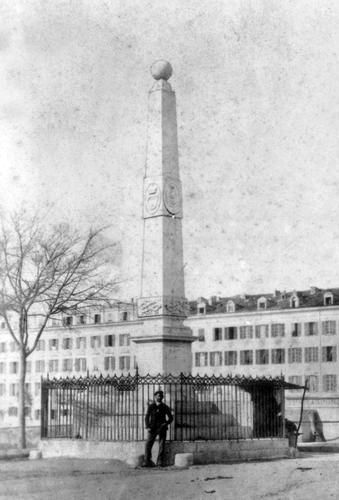The first certified traces of Jews in Nice go back to the 3rd century, in the roman city of Cemenelum, now Cimiez.
When they were expelled from France by Philippe Auguste in the 12th century, many Jews found a refuge in the territories of the House of Savoy and in Nice. The fact that Nice entered the territories of the House of Savoy in 1388 enabled this community to have a steady live, with a synagogue and a cimetery.
In 1430, the duke of Savoy Amedee 8th took, under the pressure of the bishop of Nice a decree forcing them to live in a specific area of the city, the "Judaÿsium". But they were still free.
During several centuries, they lived with no problem with the rest of the population, in spite of the hostility of the clergy. Little by little, they could settle and live out of their area.
But the pope Clement XI thought that the dukes of Savoy were too lenients with Jews. Coerced by the pope, the duke Victor Amédée 2nd published a new decree at the beginning of the 18th century, similar to the 1430 one. It forced Jews to live in a special district, the Street of the Jews, now rue Benoit Bunico. They had to wear a special insigna and a yellow hat. The ghetto was closed at sunset. The place was unhealthy and life was miserable.
In 1750, adressing the grievances of this population, Charles Emmanuel III cancelled the obligation to wear distinctive signs and softened the rules of residence. Several families moved towards the Lympia area (near the port).
The French Revolution granted Jews the full french citizenship. Nica having been conquered by France at the time, the 46 families (around 300 people) got a new status and a total freedom.
After the fall of Napoléon 1st, Nice was under the ruling of the House of Sardinia. Jews had to go back to the ghetto and had to sell any possession they might have had outside.
The King of Sardinia Charles Felix improved the situation from the beginning of his reign. The vote for the first constitution of the kingdom in 1848 put an end to the ghetto and gave Jews of the kingdom their freedom.

As soon as 1845, Jews erected a kind of an obelisk (see picture) to honor him. Some pieces of this monument are still visible at the corner of the streets de la Poissonnerie and de la Préfecture. At the time, it was standing at the end of the "New bridge", on the old town side. This is now where the "sun fountain" with its statue, facing Massena square is, next to the Phoceans avenue.
During WWII, many jewish refugees came to Nice where the occupying Italian troops didn't chase them and didn't hand them over to the nazis.
After the invasion of Nice by the nazis, (after Italy had signed a separate peace), Jews were chased again. The ss in charge was aloïs brünner, who had his headquarter in the Hôtel Excelsior, not far from the train station.
The population and the mayor (Jean Medecin) din't cooperate. The Prefect hid lists of Jews. The Bishop hid Jews, especially children, in religious institution and schools (Don Bosco, among others.) In the Maritime Alps, the village of St Martin Vésubie distinguished itself in the saving of Jews at the time.

